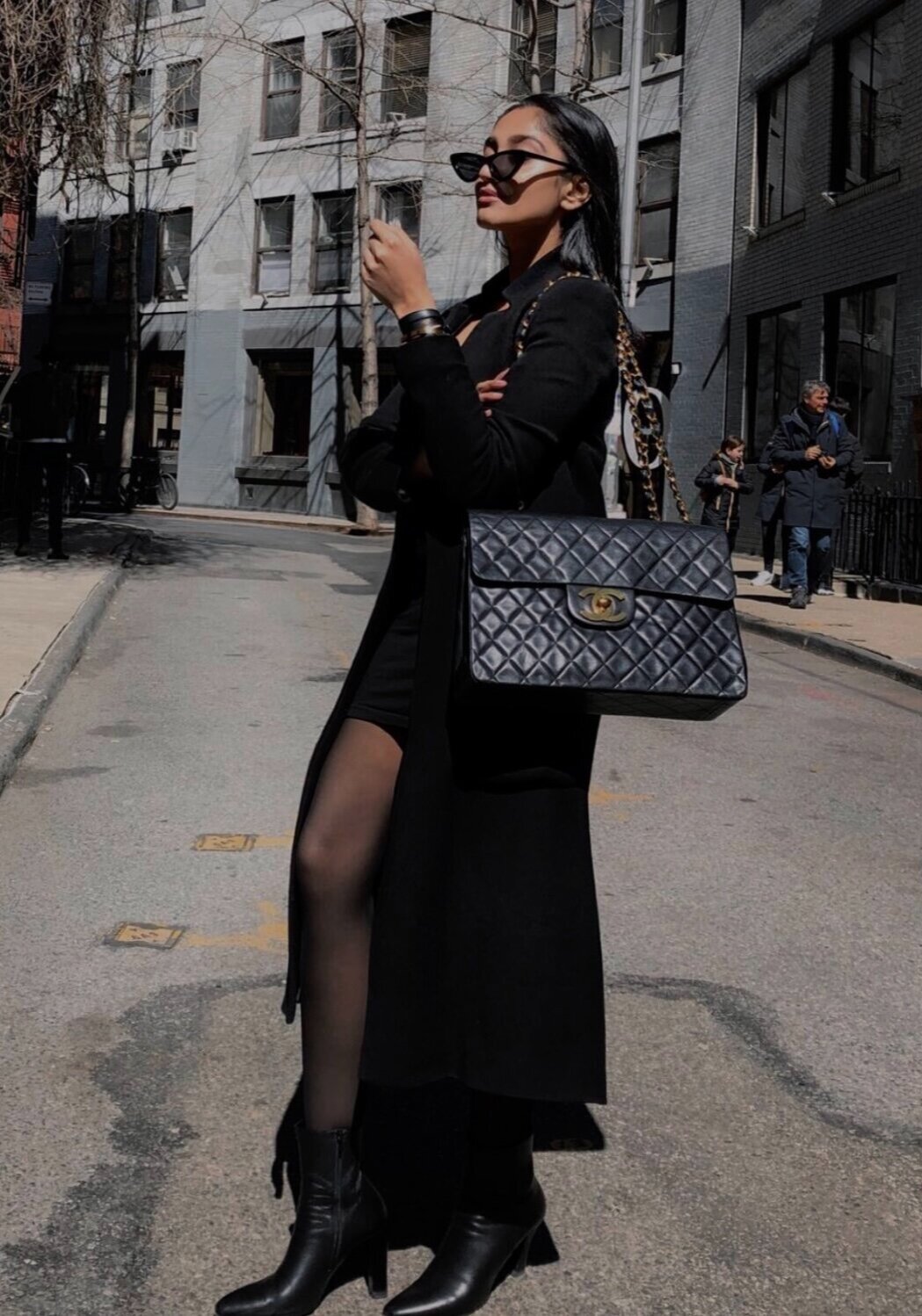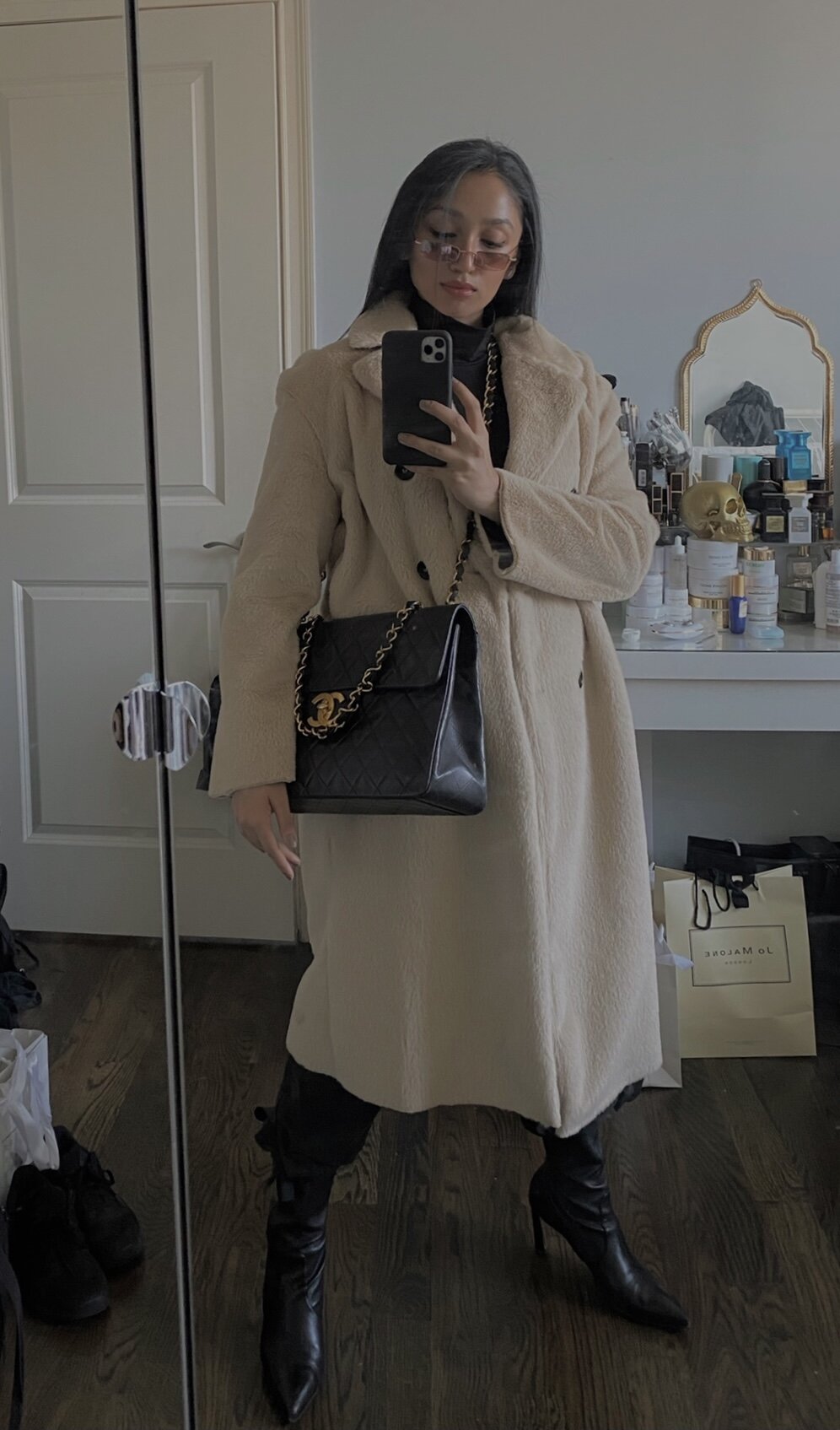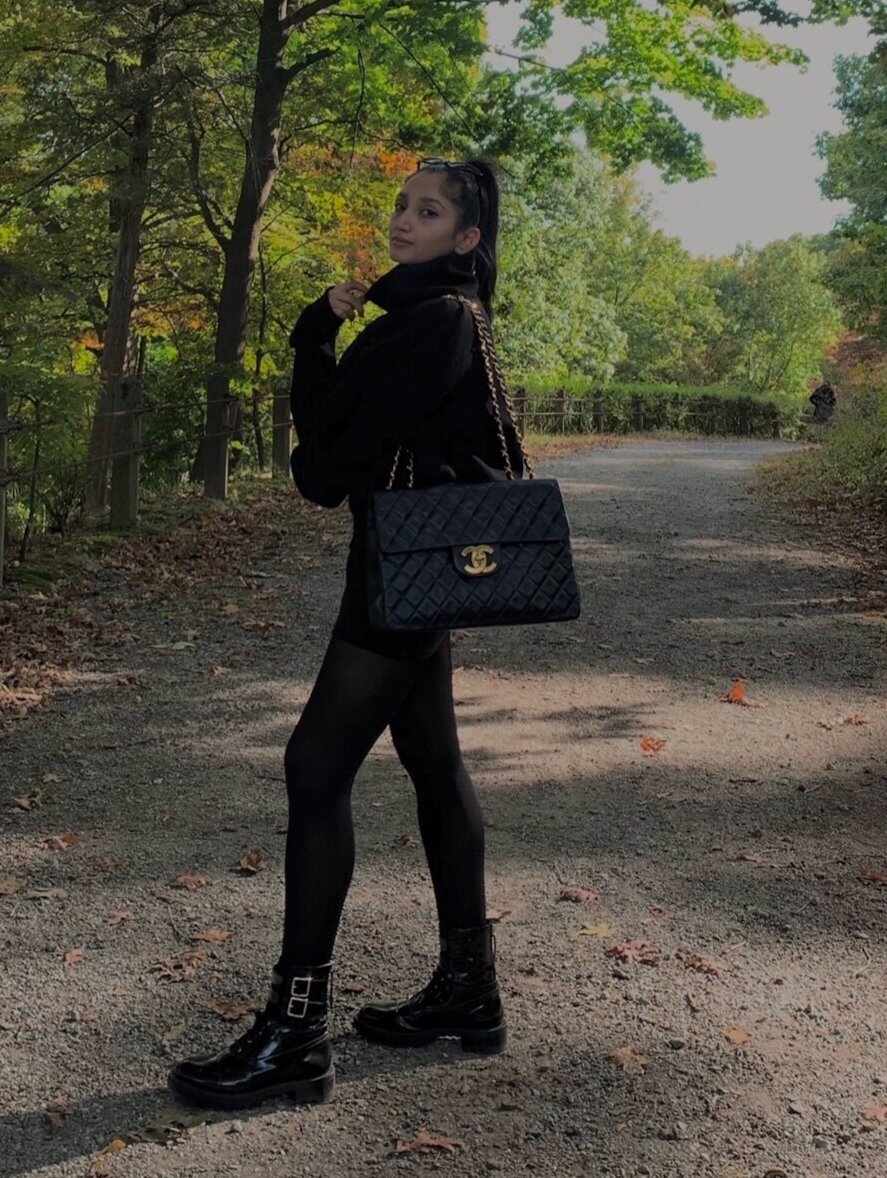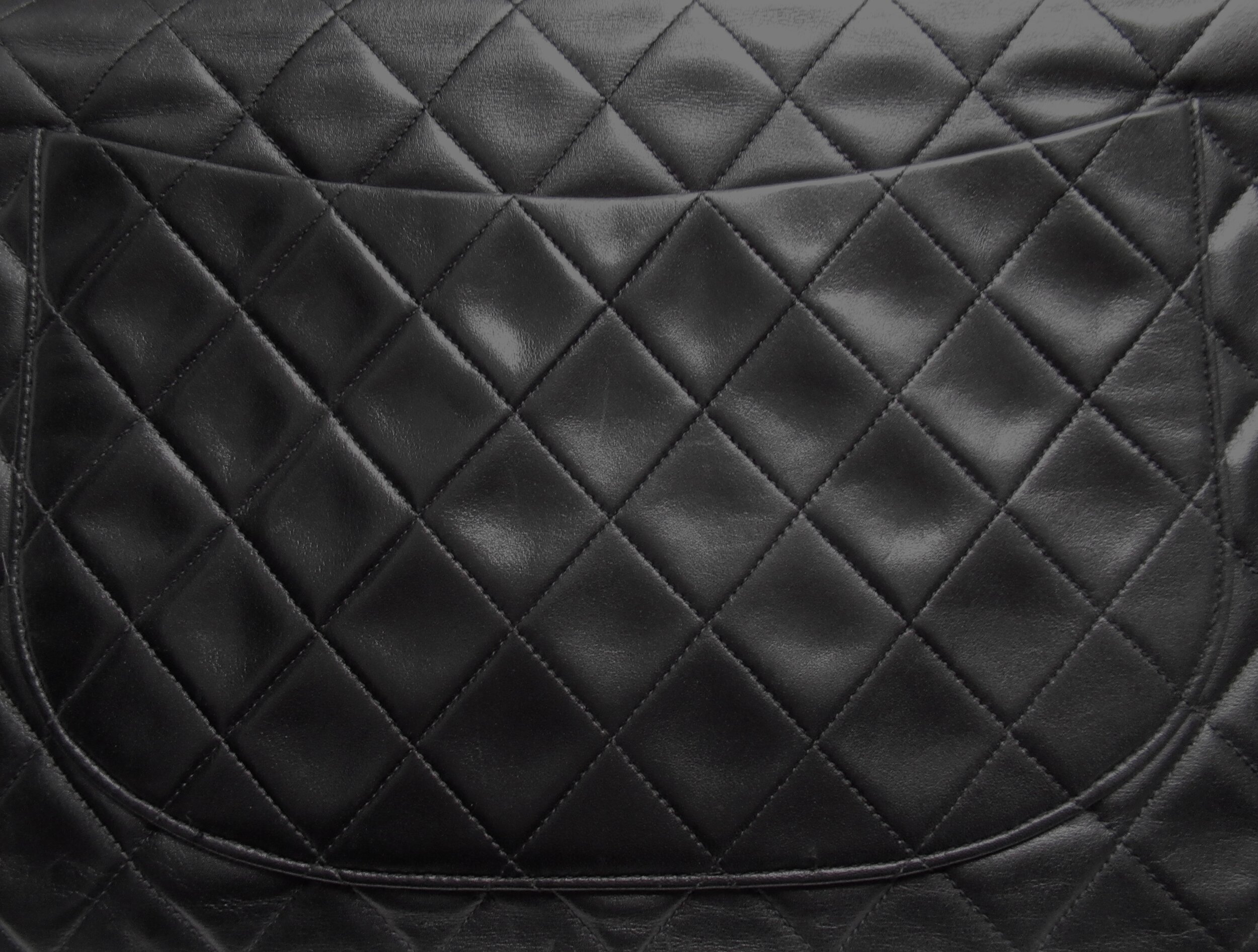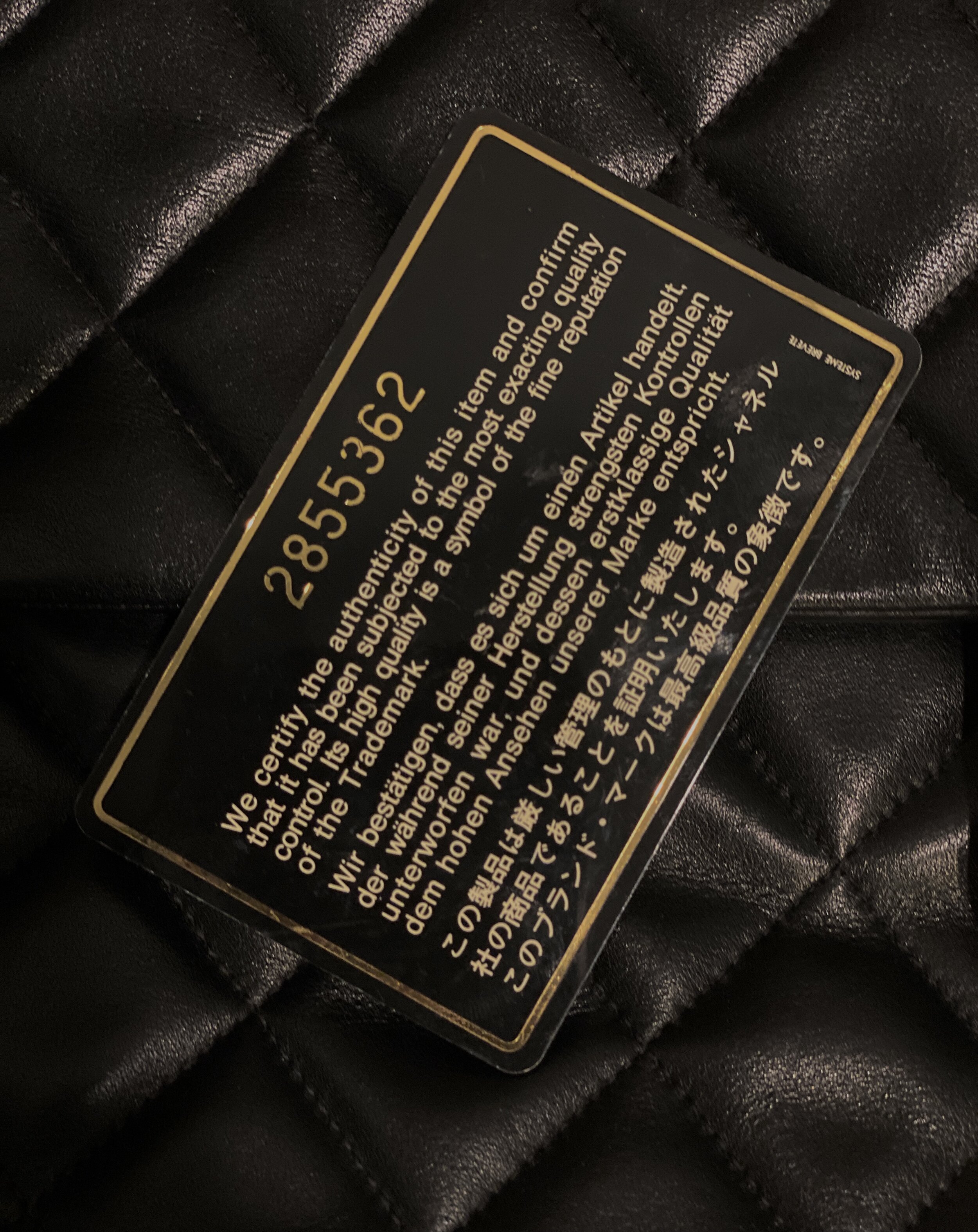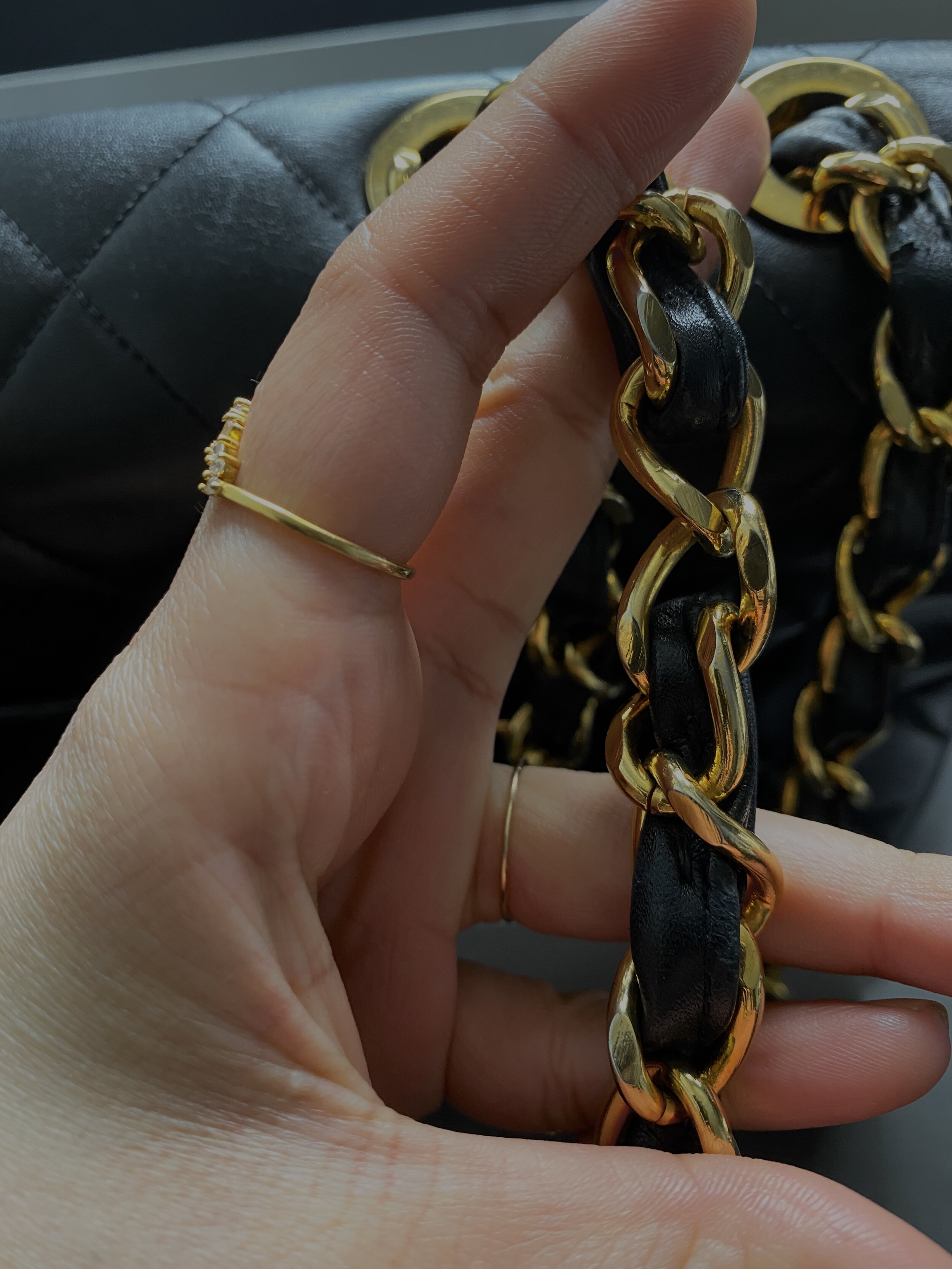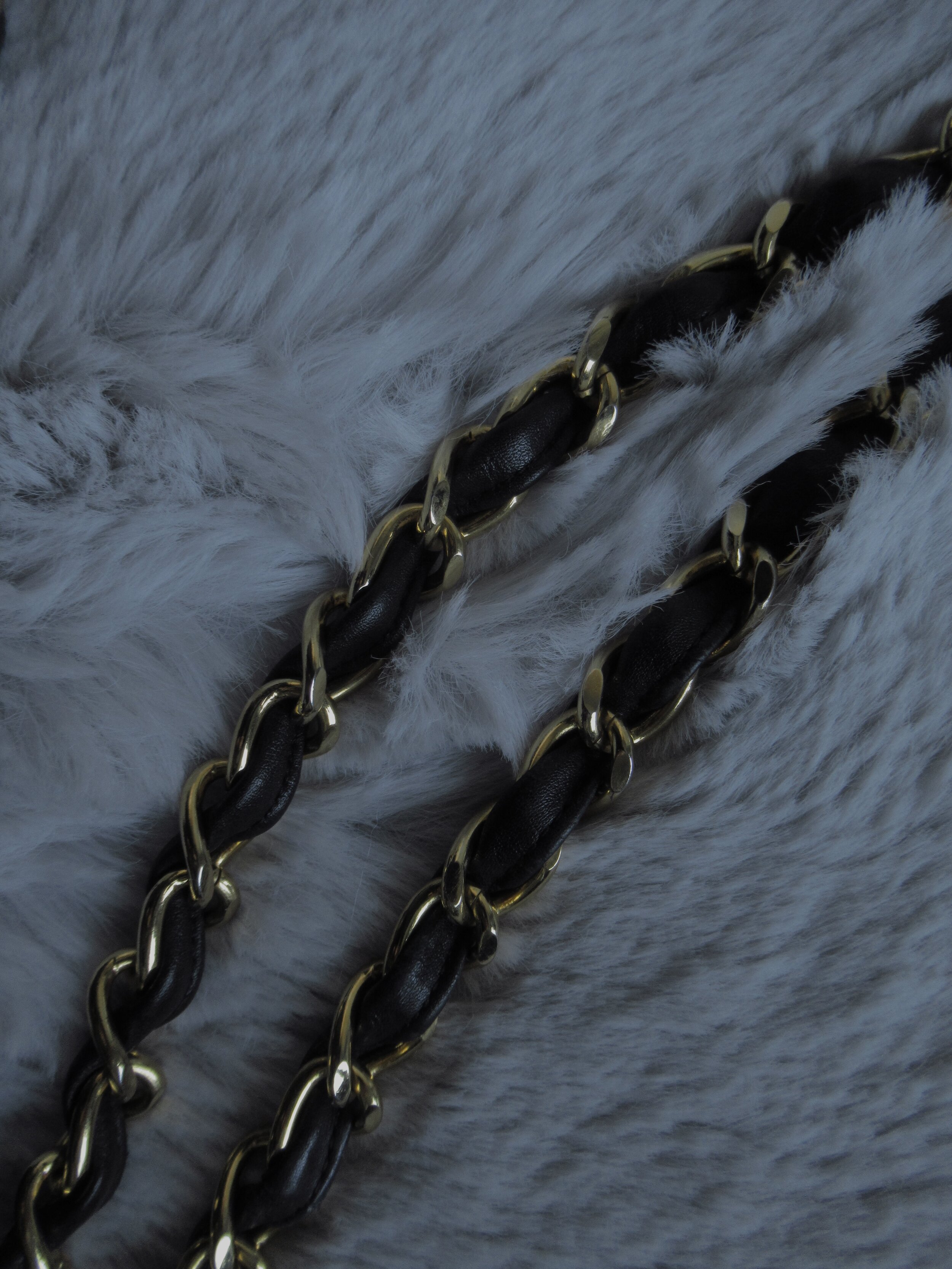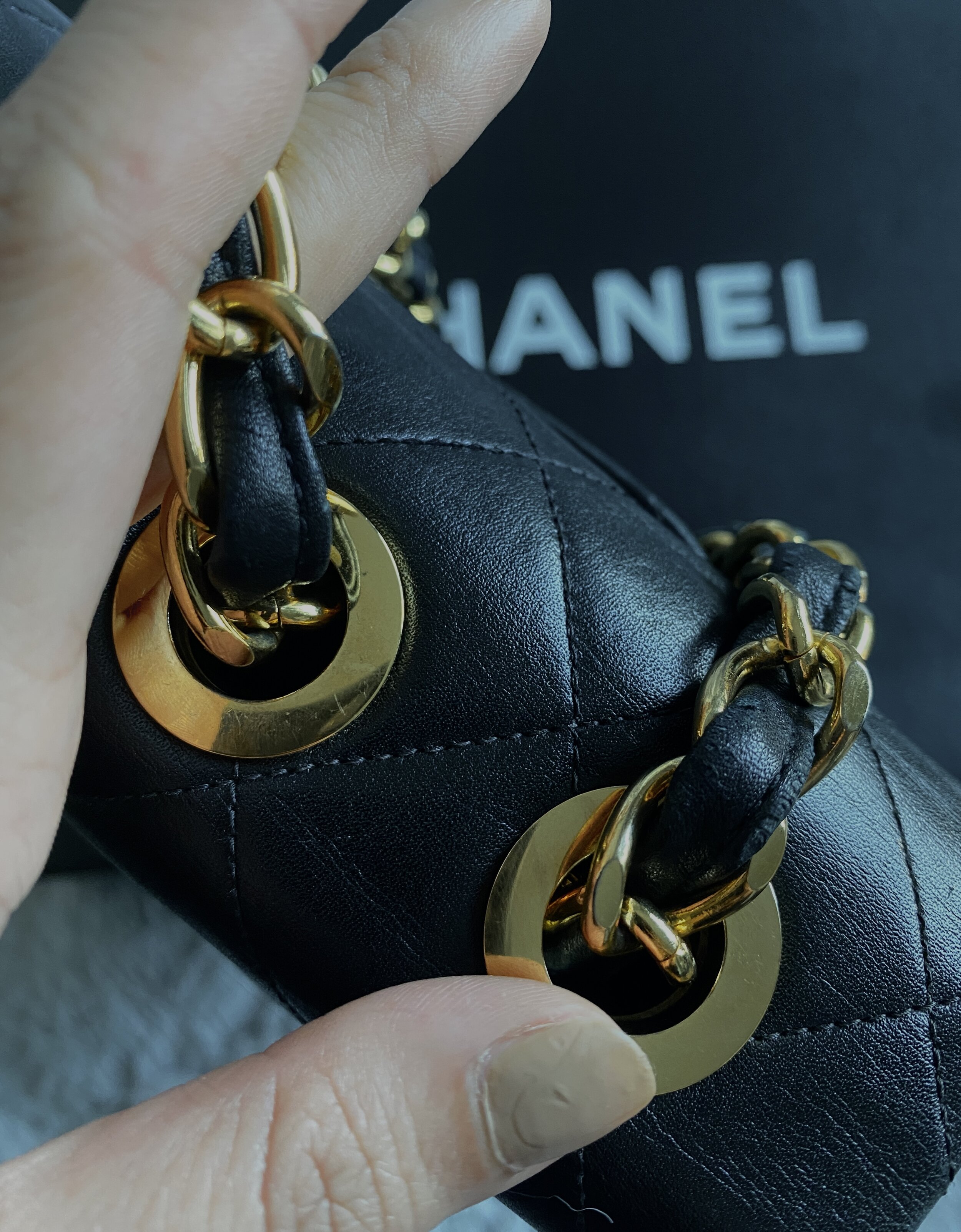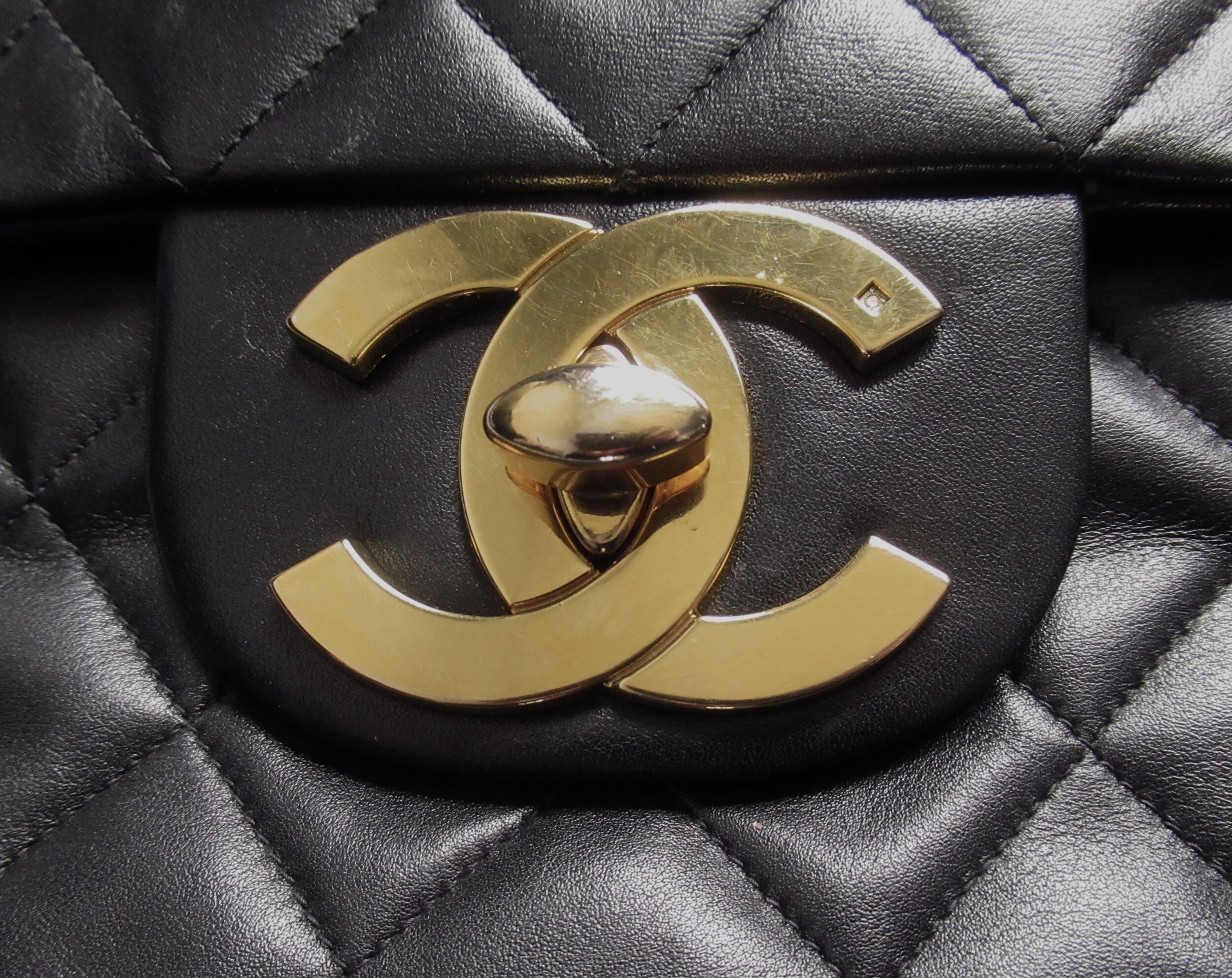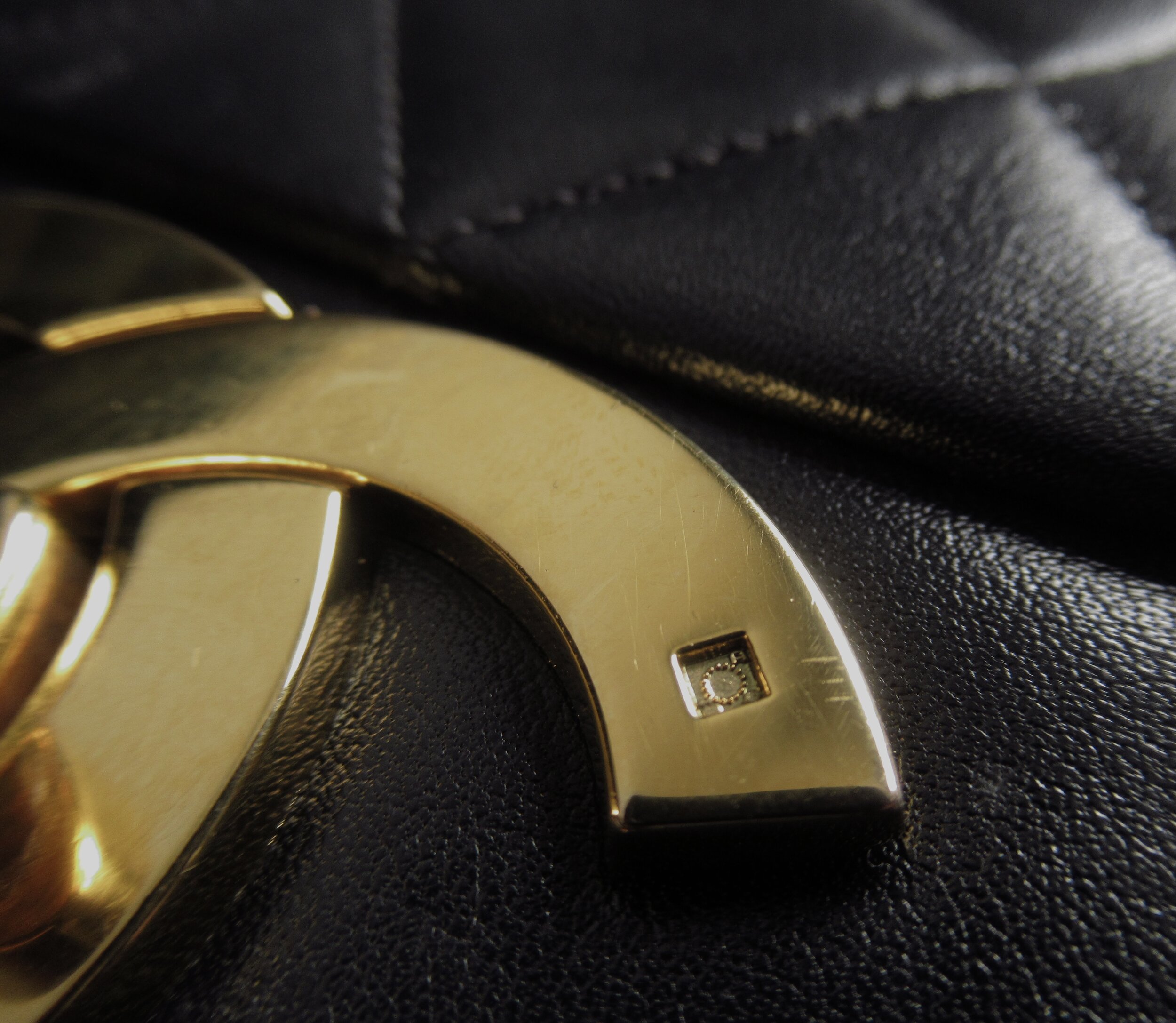On Finding Vintage
These days, I’ve been entertaining myself in true quarantine fashion by pulling out my bags and reminiscing on all the fun times we had together. It sounds sadder than it actually is, I swear, and it’s a lot better than the alternative of shredding my mind into internet oblivion on a constant basis….a cycle of toxicity! Anyone still with me?
When it comes to buying handbags, I have a few very specific rules:
I only buy resale or pre-owned if the bag is properly vintage (20 years or older, since 10 still feels too current for me), or a style that is no longer available (including Phoebe-era Celine), and
I would NEVER buy on The Real Real (or anywhere that doesn’t have an authenticity guarantee) - *edit: to expand on this, RR has expanded tremendously just in the past few years, and since it went public in 2019, their counterfeit problem has also increased. Most of their products are “authenticated” by “copyrighters” versus actual experts. You can read about it here on Forbes.
So far, I’ve only made one exception to Rule #1 - My Louis Vuitton Alma BB in Electric Epi black leather. I desperately wanted one, and it wasn’t available new in that combination in store or online on LV at the time, so I went for a lightly used pre-owned. Best decision ever.
Before I continue, I have to say that buying new except for very specific circumstances is just my personal preference - I just don’t enjoy buying on resale if I can buy a bag in-store easily because 1) I drive myself crazy over authentication concerns, and 2) I prefer the in-store shopping experience, and being able to ship or pick up my items as quickly as possible. But back to authentication: the counterfeit market is running rampant these days, resellers are hiking up prices, and most importantly - there’s no benefit to saving a few bucks for something that could be bought new but is in “OK” condition on resale, or worse, outright fake.
In any case, the market for vintage and pre-owned handbags has been very busy these past few months - with the resurgence of classic styles, timeless “throwback” pieces (see: Prada nylon bags) coupled with most people wanting to shop as sustainably as possible, it’s no surprise. Overall, the luxury handbag market is “thriving.” On that end, Chanel and Hermes are the big winners.
My first (and currently only) vintage bag was/is a 1994 Chanel Maxi flap bag (13.4 x 9.1 x 3.9 in - which is slightly wider than their current maxi which runs at 9 x 12.9 x 3.9 inches). It was in excellent condition, and came with the box, dust bag, a clearly visible shot of the serial sticker in the photos, and an authenticity card. It also took several weeks to find one that met all of those requirements. I bought it on Vestiaire and the seller was a trusted seller based in Paris, with its own authentication team, so the bag went through two rounds of authentication before leaving Paris and getting to me.
But one piece of advice for anyone looking to buy vintage: do your own research, and know what you want. It’s fair to say that my interest (aka hours and weeks and months and years of online perusing, in-person shopping and overall obsessive nature) in luxury handbags had left me decently familiar with what exactly an authentic vintage Chanel flap looks like, spanning most years of production. I also knew that I wanted a Chanel from the early 90s, aka 1990-1995, and that it would be the first of my collection. Honestly, my 90s bag obsession is largely rooted in superficial reasons like the generic idea of wanting / feeling “90s cool” and the fact that I was born in the 90s. When it comes to Chanel, however, the late 80s/early 90s flap bags are tangibly different than the bags made today, and while I love both styles, the boxy, oversized shape of the earlier flap bags, the single flap, and the super decadent, 24k flat interlocking Cs really do it for me.
When I found my Maxi, I spent a good deal of time scouring through all the resources I had gathered to check a few things. So for anyone who cares, this is how I “vetted” my bag, step by step, before and after buying it. Hopefully it’s useful to you. This is also the example of why it can be absolute hell to buy vintage being the person I am, even from a trusted seller, but just so you know, I drove myself crazy:
If you find a vintage bag and the reseller hasn’t put up all the pictures possible, ask for more. Always. Luckily I didn’t have to - the seller had provided pictures of the front, bag, interior, interior of zip, serial number inside the bag, authenticity card, box, dust bag, and various close ups.
Weigh in on the value. If you know your bags, your gut will be right 99% of the time - a trained eye will recognize even a good fake if you know what you’re looking for. Also, if the price is too good to be true, it probably is. Chanel and Hermes both resell for near-retail prices at this point for their popular bags still in production, if they are in good to excellent condition (and for Hermes, sometimes more). At the time I bought my maxi, Chanel vintage bags from the 90s were reselling between $3k-$4k and ones in very good to excellent condition were near the higher end of that range. Per my recent skim of resale sites, the same bags (size, year of production, in similar condition) are now selling for $5k - $6k, so, it’s a really good investment. But since I don’t buy bags to sell, but rather, to wear…
…I got into the gritty of the self-authentication process. There are very many blog posts, articles, and forums out there on how to authenticate a vintage Chanel - I’m pretty sure I read them all. Keep in mind not all of them are on point so, compare everything. In conclusion: all details matter. After I was satisfied with the general specs of the bag, I did a full-on review - just because a bag comes with the card, the box, dust bag etc., doesn’t necessarily make it real. So I started with the obvious - the authenticity card and serial number:
To start, the authenticity card should weigh like a credit card, and should have a solid gold border (not holographic / rainbow-y coloring). The serial number on the authentication card should match the serial number inside the sticker in the bag, and the serial sticker inside the bag has its own meaning: here’s a pretty comprehensive breakdown on the serial number stickers, and another on the actual numbers.
I knew that since my bag was made in 1994, it would have a 7-digit serial number, starting with either 2 or 3, and that the serial sticker would be white with the Chanel logos. Note: bags before 1984 do not have serial number stickers, and currently, any bag with a serial number over 8 digits, which has been the number since 2005, is a fake.
But again…just because a bag comes with an authenticity card that matches the serial number on the internal sticker, which matches the year of production…doesn’t make it 100% a “go.”
So I went on to assess the stitching:
Authentic Chanel Maxis will have at least 12 stitches on each side of the diamond, which is larger than the diamonds on the other flap bags.
The quilting on authentic Chanel bags will also line up seamlessly on the front and over the back pocket. Mine passed.
Next, the straps: the chain-leather straps should feel pretty heavy (…and they are, if I wear my bag during the summer on bare shoulders, I often come home with indents lol). If the hardware is gold, the chain should reflect that rich, yellow, 24-carat gold despite age (but not flashy). Also - most bags made before 2008 will typically not have any stitching on the leather part of the strap, and if they do, it will only be on one side. A lot of sites will tell you that no pre-2008 Chanel bags have stitching on the straps but that is not true - a lot of jumbos, maxis, and exotic-skin flap bags feature stitching on the straps.
The CC lock: the right-side C will overlap on the top, and underneath on the bottom, on both the actual lock and the interior CC logo, it will never be otherwise. The two Cs shouldn’t be set in a way where one C completely overlaps over the other, and the middle width of both Cs and the space in between will be equivalent. The turn lock should always be smooth, and you should hear a fairly satisfying click every time you turn it. This is a good “manual” on all the other details to pay attention to on the lock, including spacing, size, edges, etc.
Fun fact: some Chanel bags from before mid-late 2008 feature a hallmark stamp (small square) on the interlocking Cs, which indicates the real 24k gold plating used for the hardware back then. The stamp can appear on the top left, top right, or bottom right of the CC logo turnlock and the location varies based on year, where the clasp was created, etc. Here’s a comprehensive guide by Yoogi’s Closet to reading the hallmark stamp.
Funner fact: if you look closely at the square (see mine below), you should see a very clear stamp inside. Still not sure if it means anything more than an indication of the gold plater, but most buyers believe that if there is a stamp, it means the bag was made in France. In which case, the “Made in” stamp on the interior flap should match the county.
If there is a stamp on the interlocking Cs, it should never be of the registered trademark symbol (“R” inside circle)…if that’s the case, it’s a most definitely a fake and you should run.
(and by now you’re just as exhausted as I am), but we cannot forget the interior features-
The Chanel logo should be embossed into the leather, not sitting on top of it, and the width of a genuine Chanel logo is 3.3cm. The color of the stamps (one that says “CHANEL” and the other “Made in France,” “Made in Italy” and sometimes “Made in Spain”) should match the color of the bag’s hardware. The stamps will usually mirror each other and sit on the opposite inside walls of the bag.
A lot of people overlook the zip, but honestly you should be looking at every small thing when buying vintage. Chanel bags have used various zippers over the years, but older vintage bags will usually feature D, OPTI DMC, DMC, and LAMPO, with the symbol engraved on front zipper slider. Some zippers will also feature a pull tag, with some bags featuring a CC zip pull (gold circle with the iconic CCs). Some bags have a leather pull tag which should match the main leather of the bag (i.e. a caviar leather bag would feature a caviar pull tab).
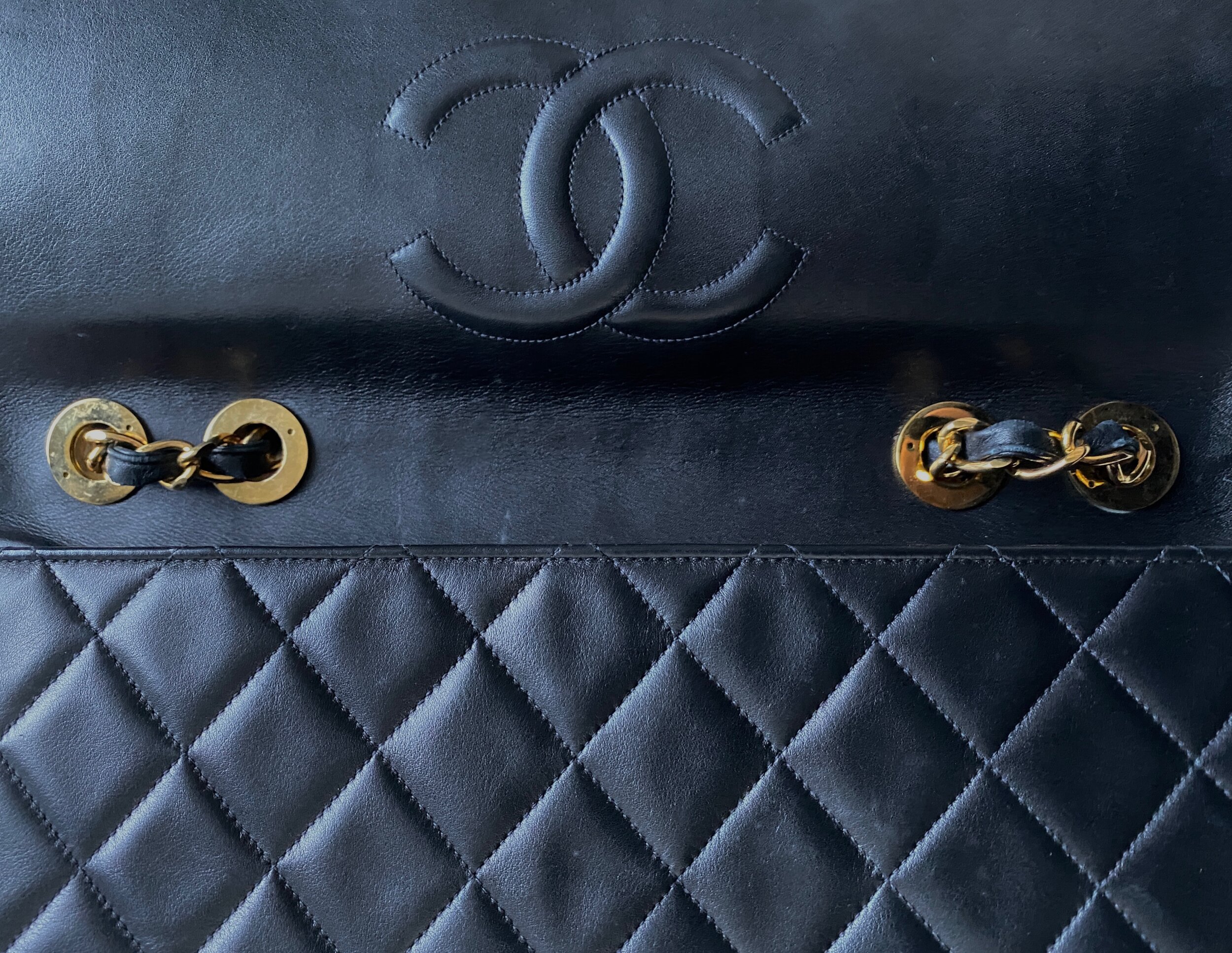
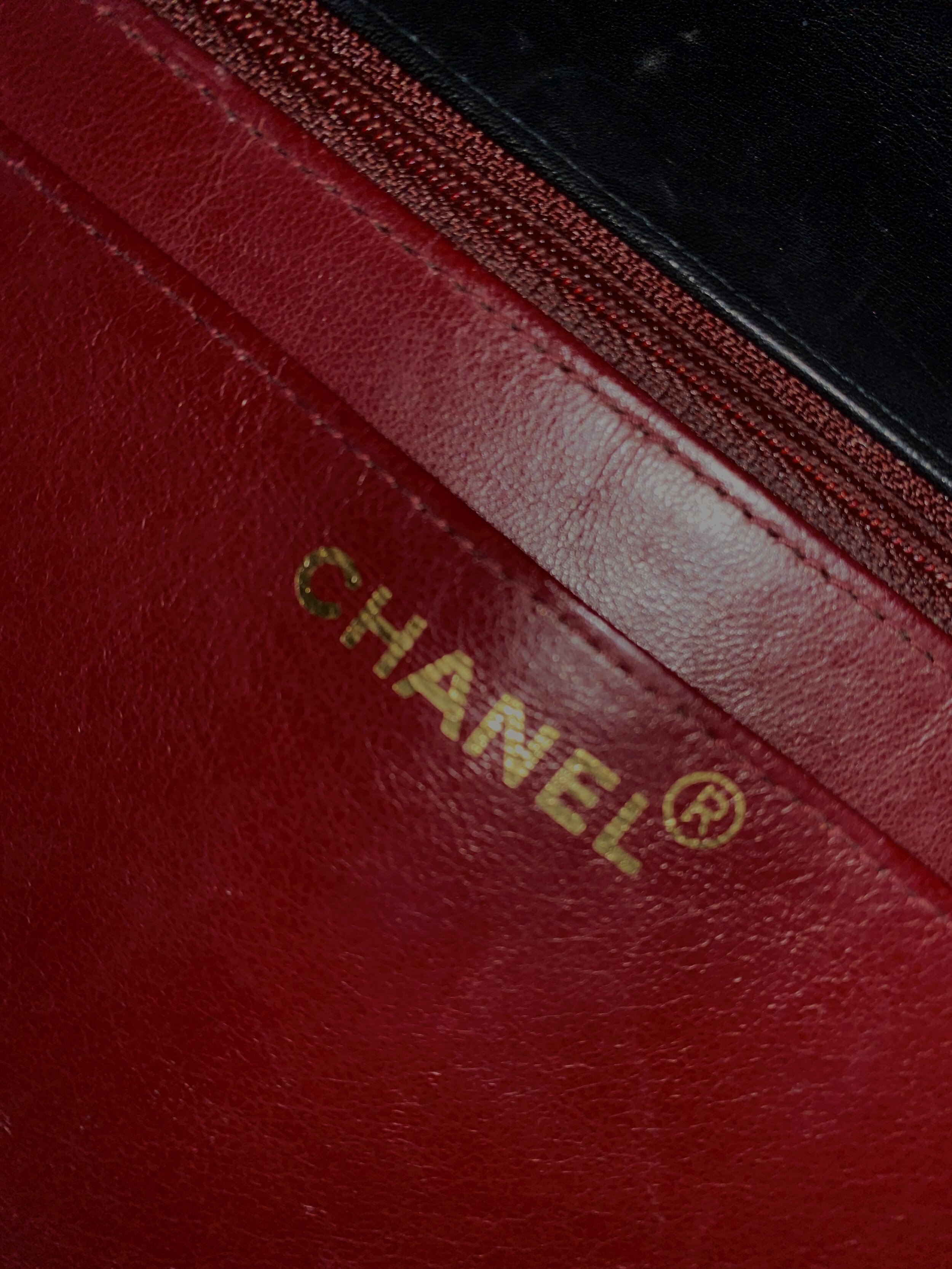
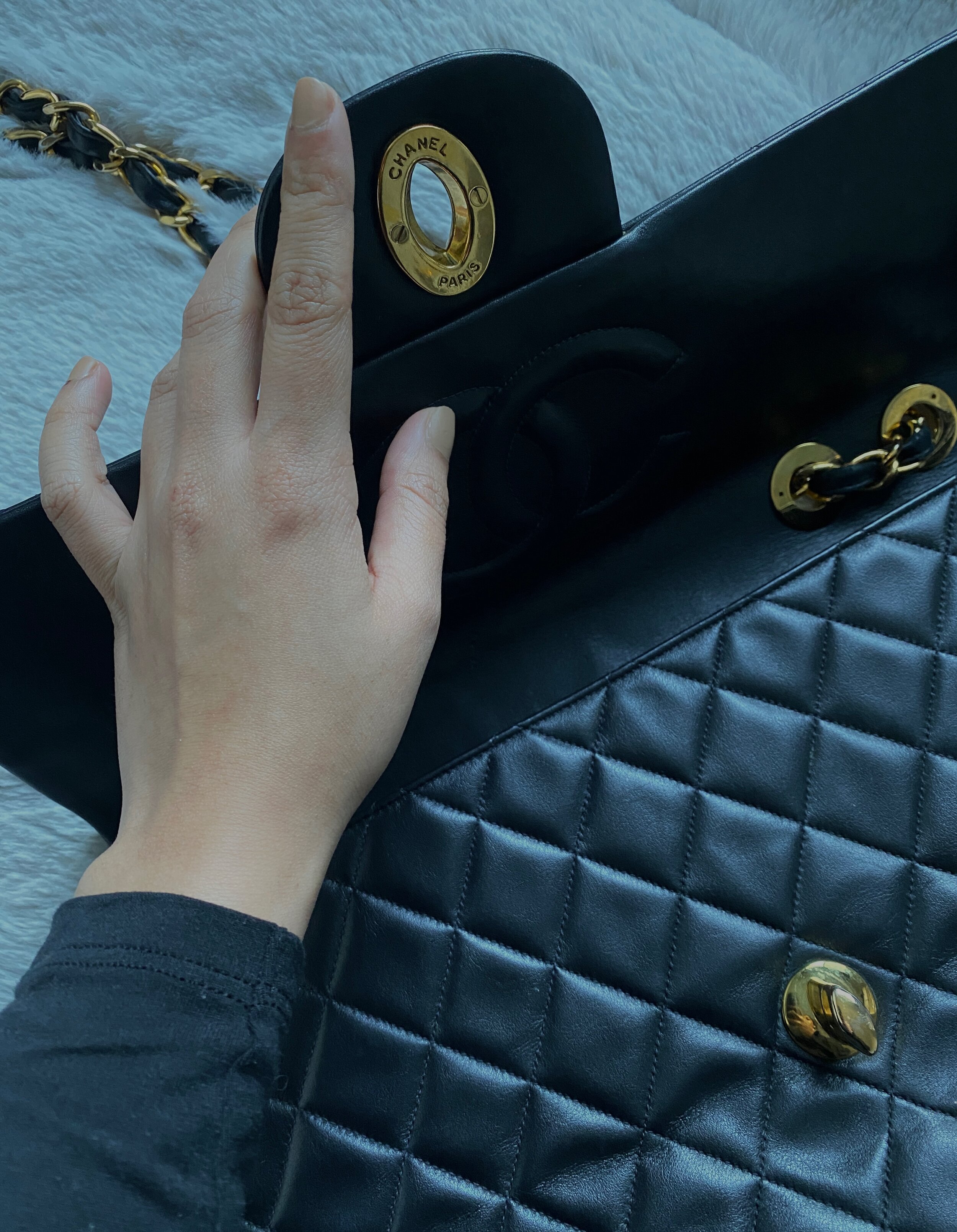
and FINALLY…it should smell like real, good, leather. A fake will never get that right - it will smell cheap, chemical-y, or just…not good.
Anyways, I hope that this was helpful - at least now you really know the tumultuous mind trips I go on when shopping. And if you’re a close friend, or someone I chat with every day - thank you for your understanding. ALWAYS.
-S.
